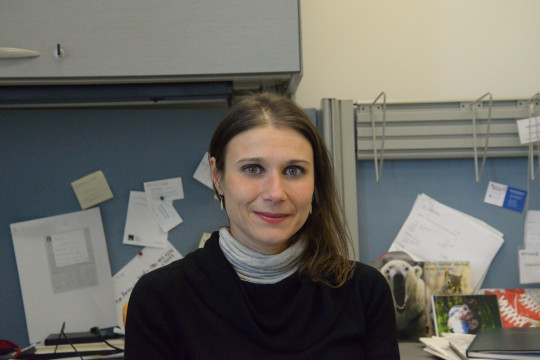A discovery by IWK researchers may not only redefine Zellweger Syndrome (ZS) but indicate how patients should be tested in future to prevent the severe infections that are characteristic of the disease. The studyrecently published in Cell Reports is the first of its kind to explore the impact peroxisome activity has on the creation of blood and bone marrow cells (hematopoiesis) in patients with severe Zellweger Spectrum Syndrome (ZSS).
“Severe ZSS patients experiencing recurrent infections and presenting low immunity were described in case study reports, however, doctors do not normally assess their immune status,” says immunologist Francesca Di Cara, associate professor in the department of Microbiology and Immunology, and pediatric immunology researcher at IWK Health. “This work states that hematopoiesis and immune deficiency are a feature of the ZSS and therefore, the immune landscape of ZSS patients should be tested to prevent complications caused by severe infections in these patients.”
Peroxisomal disorders are rare, genetic, metabolic and developmental disorders that affect all major organ systems of the body. They occur when peroxisomes, organelles within the cell, are missing or do not function correctly in the body. Zellweger spectrum syndrome is a genetic disorder passed from parents to children. It disturbs cellular function and causes serious problems soon after birth. Newborns can have brain, liver, and kidney problems, as well as difficulty in feeding or moving. There is no cure or treatment. Infants with severe form of the disease usually don’t live past their first year of life and the ones that do live with life threatening disabilities.
“Most childhood diseases are understudied, and this is especially true for the so-called orphan diseases such as PBD regardless of how debilitating such diseases can be,” says Pharmacogenomicist Dr. Tobias Karakach, Assistant Professor, Faculty of Medicine, Department of Pharmacology at Dalhousie University. “In this case, Dr. DiCara tackles the Zellweger syndrome by demonstrating that the immune disorders associated with this syndrome arise from defects in cells’ ability to produce of new blood cells.”
“Using a novel genomic approach termed scRNAseq, we are able to define immune cell populations at different stages of development at high molecular resolution,” says Dr. Andrew Makrigiannis, Professor of Immunology in the Department of Microbiology and Immunology at Dalhousie University. “This approach is pivotal to defining developmental defects that occur at early age in metabolic and developmental disorders such as ZSS. Thus, this analysis will drive further investigation in defining the immune landscape in these patients and determine the extent to which immune defects contribute to the multi-organ dysfunctions that characterized this syndrome.”
The work also established a role for peroxisomes in dendritic cells, immune cells found in tissues such as skin which boost immune responses by showing antigens on to adaptive immune system cells, prompting them to produce antibodies and memory cells.
“Antigen presentation is a really important immune function because it impacts adaptive immunity and our ability to respond to vaccines,” says Di Cara. “So the discovery that peroxisomes control this function opens new research avenues in vaccine and drug development in which we can look at peroxisomes as therapeutic targets.”
“What is unique here is the way Dr. DiCara carried out these studies,” says Karakach. “Not only does she have a mouse model that mimics the disease, she used one of the newest technologies, single cell RNA sequencing (scRNAseq), to identify distinct cell types that are characteristic of the syndrome and to show the associated malformation of new blood cells.
A key feature of scRNAseq is that the experiments produce a lot of data meaning that the experiments must not only be expertly designed, the analysis of these data also requires unique expertise, and Dr. DiCara assembled a team of highly competent colleagues to achieve such a feat,” says Karakach.
This work was funded by a Project Grant from the Canadian Institutes of Health Research, a Discovery Grant from the Natural Sciences and Engineering Research Council of Canada, a Canada Foundation for Innovation JELF equipment grant, an IWK Foundation Research Establishment grant and the Dalhousie Medical Research Foundation start-up fund.
